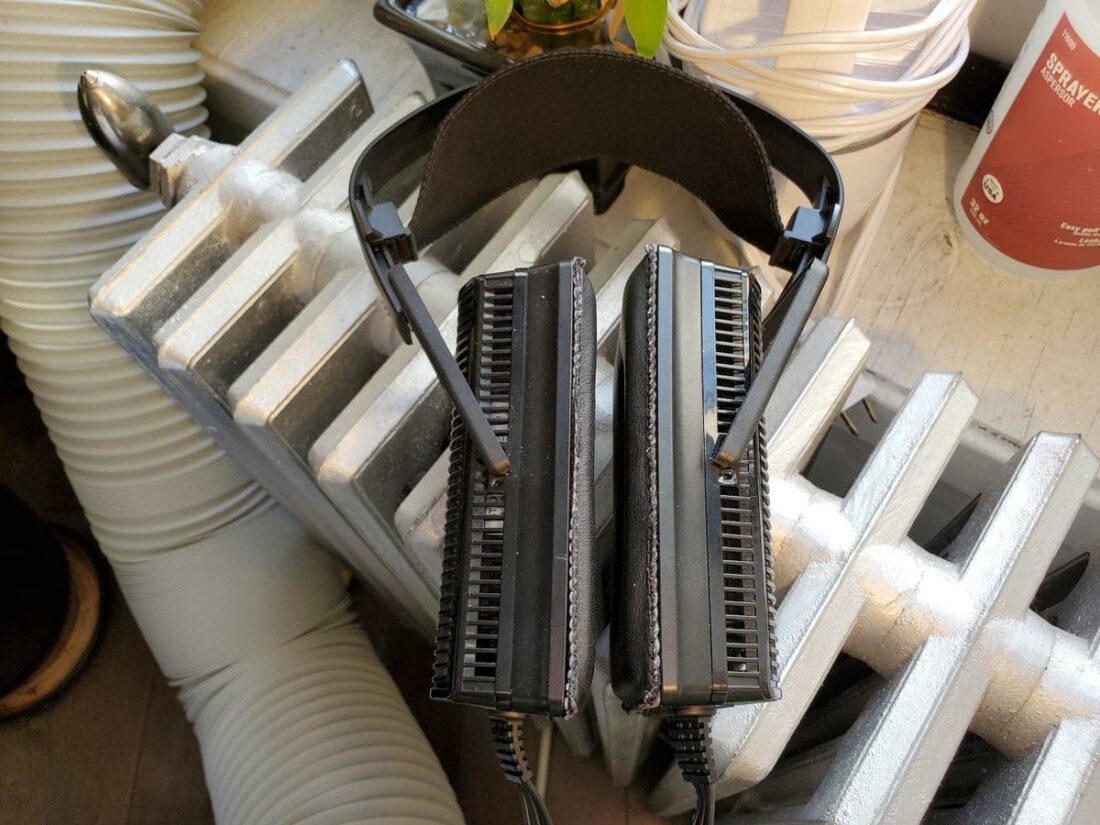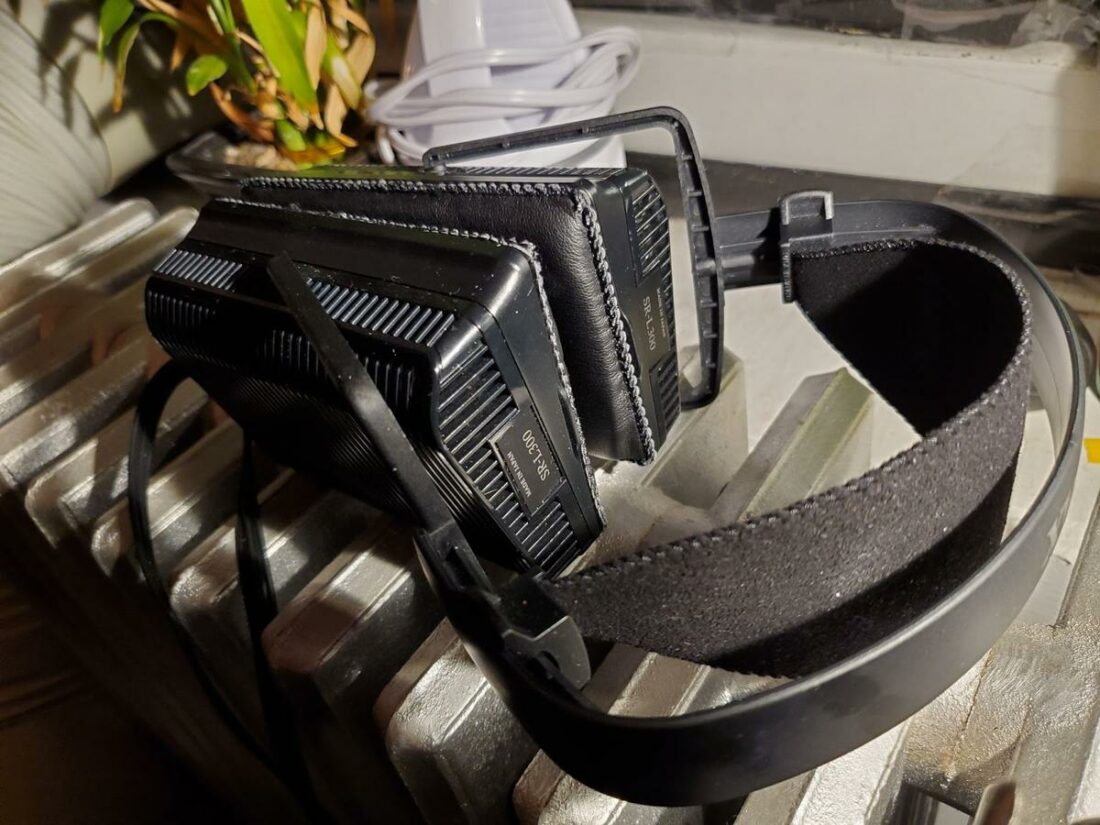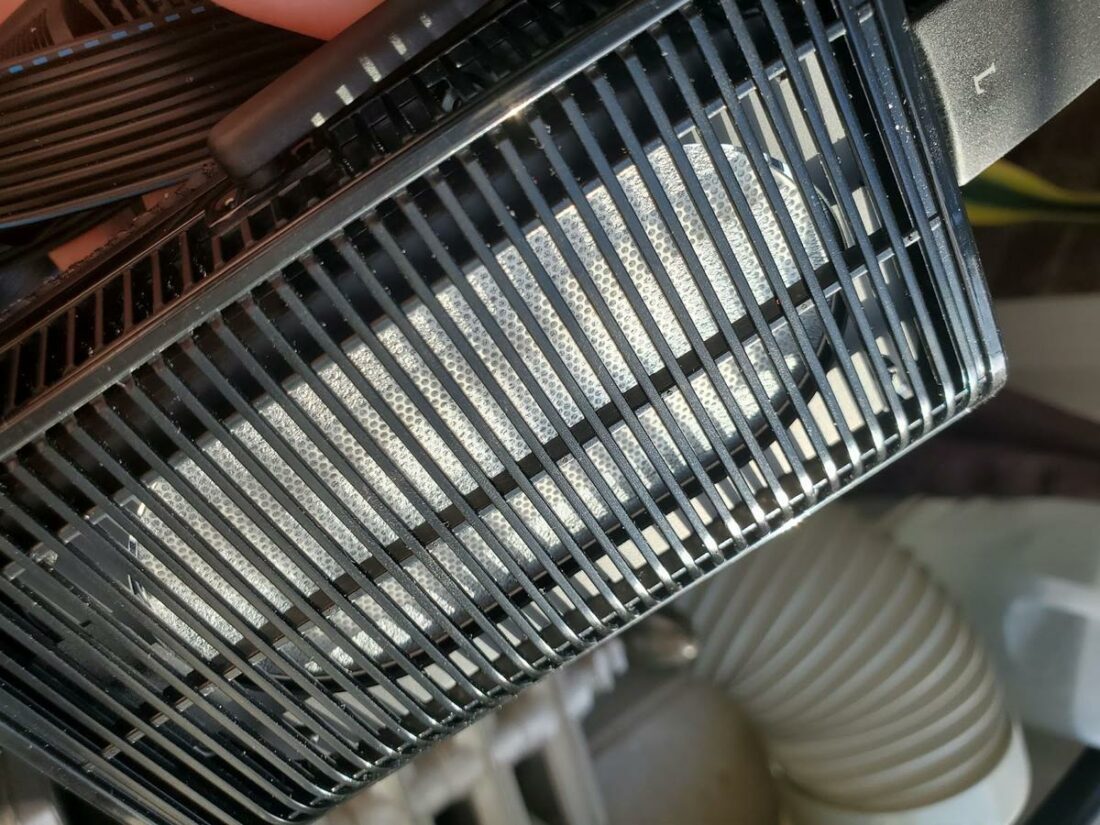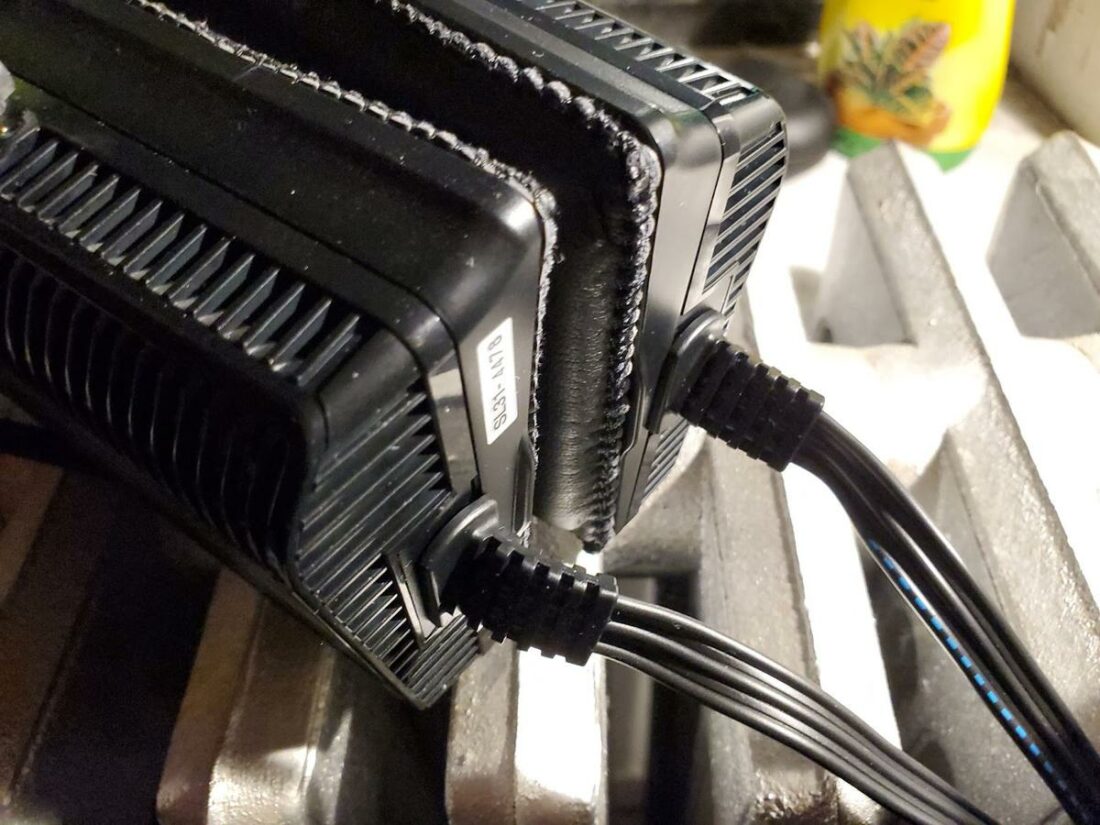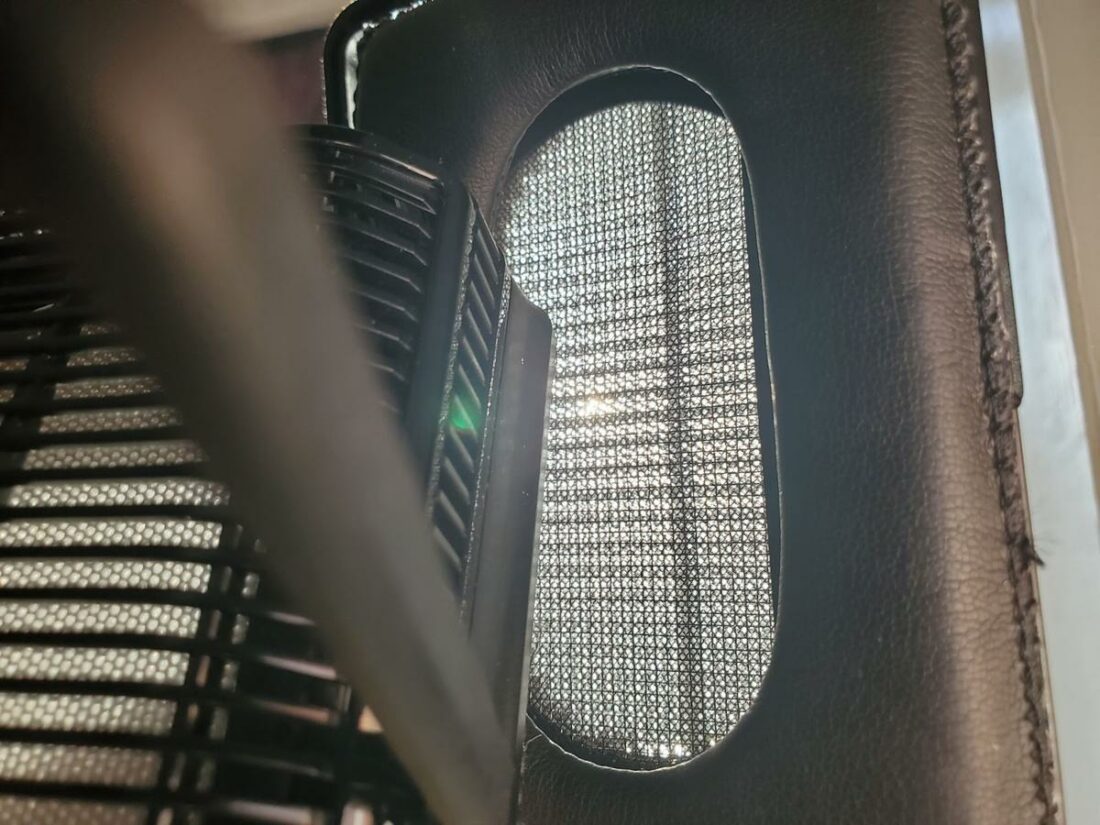It’s no secret that I’m something of a fan of Japanese electrostatic headphone manufacturer Stax. In a previous review, I declared the SR-007 Mk1 the best pair of headphones I’d heard, and I own a few vintage Lambdas. So I’m ecstatic that today I get to review one of Stax’s current models. The SR-L300 is Stax’s entry-level pair of headphones. It’s the cheapest and, supposedly, lowest-quality of their Lambda series of headphones. What are Lambdas? The Lambda is one of two basic form factors that Stax produces (the other being the Omega model, which includes the SR-007 Mk2, SR-009S, and SR-X9000). It’s also long been a staple of the Stax family–the first model, the SR-Lambda, came out in 1979, and some Lambda or another has always been in production since. The Lambda series is instantly recognizable, with its rectangular plastic looks and forward, energetic sound. But how does the SR-L300 stack up? In my home testing, I not only tested the L300 but also included some A/B comparisons with the SR-Lambda Pro, a nearly 40-year-old model that was once Stax’s flagship.
Technical Specifications
Form: Open-back, over-ear Drivers: Electrostatic Impedance (Ohm): 145,000 Ohms Sensitivity (dB): 101dB / 100Vrms Bias: 580V Electrostatic Capacitance: 110pF (including cable) Frequency Response (Hz): 7Hz – 41kHz Removable Cable: N Source Jack/Plug: Stax 5-pin pro-bias connector Weight (g): 11.4oz without cable / 15.8oz with cable
Electrostatic drivers work much differently from planar and dynamic drivers, so they need different amplification. In the past, the SR-L300s were paired with the SRM-252S. By default, the SR-L300s come packaged with the SRM-252S in a combo package that can be had for just over $1,000. For the purpose of this review, Stax was kind enough to lend me an SRM-400S amplifier. It’s also more than possible to score an old SRM-1/Mk-2, which is a great entry-level amplifier.
Build
You can already tell from the pictures, but the Lambda family certainly has an “interesting” set of shared characteristics when it comes to their construction. First of all, they’re rectangular, taking on the approximate appearance of an air conditioner. Second, they’re almost entirely plastic, which for many, doesn’t inspire confidence in their build quality. Regardless, the L300s are likely not as fragile as they first appear. My pair of Lambda Pros are arguably even worse constructed, with a thinner headband arc and cheaper plastic ear cages (for lack of a better term). Yet they’ve survived since the 80s and still work just fine. Still, there have been reports of headband snappage. But nothing about the Lambdas suggests to me that they’re any less fragile than other headphones. Be careful with them, and they will last.
Comfort
I do have one small gripe with the build of the L300s, though, and that’s with the comfort. All Lambdas have a tab on top of either earcup that restricts the rotation of the earcups. On the L300, though, Stax have altered the position of the tab such that the earcups can often get stuck in a position where the bottom of the earpads are not resting against your head. It’s difficult to describe, but it’s something that Stax should really look into changing for future Lambda releases. That said, the L300s are fairly comfortable headphones. I understand that doesn’t apply to everyone–some people find the earpads too thin, and others lament the change in the headband design. Some even find their ears resting against the mesh grills on the inside of the earcups, a fate from which I am fortunately spared due to my small ears.
Stax SR-L300 Sound
Of course, the defining feature of the sound of electrostatic headphones is a kind of weightless delivery–one that often forsakes “tangibility” and “impact” in favor of dutifully thrusting details and spatial cues to the foreground. This type of sound has earned electrostatic headphones fans and detractors in equal measure. Some say that Stax headphones, especially Lambdas, have a thin “toy” sound. But others say that the sound reproduction of electrostatic headphones carries a realism that dynamic headphones can’t match. (I unapologetically count myself in this category.) Whatever your opinion, you really have to hear a pair of electrostatic headphones to understand what they sound like. And that’s where the L300s come in–like the Massdrop x Koss ESP/95X, the L300s are intended to be an “entry-level” pair of electrostats. You buy these to understand the electrostat sound. And then, Stax hopes, you’ll be hooked, and eventually be compelled to step up to a higher-level pair. But, of course, it’s more than possible to use the SR-L300 as one’s only pair of electrostatic headphones, and many will find that the SR-L300 provides enough of a change from the sound of other headphones that they don’t need to step higher. The strategy of having multiple Lambda models at different price points is one that Stax has adhered to since the 90s, with its Basic, Classic, and Signature models. The current Lambda line-up is a little different, with the L300 taking the spot of the Basic model, the L500 Mk2 taking the place of the Signature, and the L700 Mk2 occupying a higher price point than most previous Lambdas (and sounding corresponding closer to the Omega models, or at least, so they say).
Bass
It’s fairly well-known that bass is not exactly the strong suit of electrostatic headphones. Because electrostatic transducers are so light, it’s difficult for them to produce bass as impactful as dynamic headphones. Many electrostatic headphones, however, have good extension. It’s the same principle as with planar headphones: as long as there’s a sealed-off chamber of air between the driver membrane and the ear, the bass should theoretically extend perfectly to 0Hz. With the old Lambda models, this is true. My Lambda Pros are pretty bass-light, but they have perfect extension. The contemporary Lambda models, however, feature a design quirk that prevents them from having ideal extension. This design quirk? A bass port that prevents a seal from being formed between the ear and the driver. This carries with it the benefit of alleviating the risk of driver rupture from pressure build-up. But the L300 has a mid-bass hump and a roll-off below it, much like a pair of dynamic headphones. To be clear, the bass is very clear compared to your average dynamic headphone at the L300’s price point. However, the bass is somewhat boomy and slow compared to other electrostatic headphones. It is still more impactful than the Koss ESP/95X, though. Fortunately, it’s possible to fix this problem by finding the bass port underneath the earpads and sealing it up with Blu-Tak. This modification will remove the mid-bass hump and give you perfect extension, and slightly better-behaved bass. I didn’t try this on my loaner pair since I have to return them to the manufacturer in like-new condition. But this is a well-known modification, and it’s easy to find instructions online.
Midrange
Though they have, throughout their history, released dozens of headphones, Stax have always had a “house sound” that emerges from a combination of electrostatic technology itself and specific tuning choices. The most notable part of the Lambda frequency response is a driver resonance that causes a peak somewhere between 1kHz and 1.5kHz. This has been present in nearly every Lambda model, although it was perhaps slightly less egregious with the early models, especially the original normal-bias Lambda. This peak, along with a relatively thin lower midrange and slightly recessed upper midrange, can make music sound alternatively thin or kind of throaty when compared to a more neutrally tuned pair of headphones like the Sennheiser HD600. It’s not as bad as I’m making it sound, but the odd midrange tuning may be a turn-off for some. Introducing some EQ to even out the sound may not be a bad idea. The upside is that, when compared to other Lambdas, the L300 is quite aggressive, potentially making it a better choice for rock and other fast-paced music than its more docile siblings. They also bring vocals to the forefront, more than the other currently-produced Lambdas. The trade-off is, of course, that the nasal tone of the midrange might cause the singer to sound like they’ve come down with a case of the sniffles.
Treble
Electrostatic headphones are known to have the greatest treble resolution of all driver types. The trade-off is that they’re often quite bright, to the point where it can be unpleasant to some. The L300 features a boost in the air region, which casts a bright sheen over everything. Many audiophiles go to electrostats expecting to hear loads of detail, and the L300 definitely pushes the detail in the upper treble. To the beginning ear, the boosted treble might lead to the conclusion that the L300 is more detailed than the other Lambdas, but of course, this isn’t true. The L300 is actually considerably less resolving in the treble than some other Lambdas, which makes sense, given their price range. That doesn’t mean the L300s aren’t resolving. The total lack of grain and distortion in the treble separates electrostatic headphones from other headphones.
Old vs. New
As a Stax fan, I have had the pleasure of comparing the L300s with my own pair of Lambda Pros. The Lambda Pro is a model produced in the early 80s and going through the early 90s. Since my Lambda Pros are quite old, one might expect them to be less technically capable than the L300s. I found the reverse to be true: the Lambda Pros were more resolving than the L300s by a small amount. I can’t say exactly why this is, but the newer Lambda simply had a somewhat “softer,” more closed-in, and less airy sound. This may come down to treble frequency response, but the Lambda Pro only sounds slightly brighter than the L300. The difference in resolution is slight, but it makes itself evident when I listen to very dense tracks: the Lambda Pros are better able to separate the instruments from each other and present reverb tails more clearly. Meanwhile, the L300s are slightly more engaging, fuller, and tactile than the Lambda Pros. The L300s have a larger peak at 1kHz, and, therefore, a less even tuning, which brings vocals forward. They also seem more even in the upper midrange, while the midrange of the Lambda Pro is decidedly withdrawn compared to the bright treble. However, the L300s and the Lambda Pros do recognizably come from the same lineage of headphones, and they present sound with the same ghostly electrostatic clarity and a similar overall sound. If I have to choose, I give the nod to the older Lambda Pro, but the L300 tuning might be more acceptable to the mainstream, with the Lambda Pro coming off as thin or overly bright in comparison.
Where to Buy
Conclusion
Though the SR-L300 is the lowest-priced pair of headphones Stax currently offers, they shouldn’t necessarily be viewed as a downgraded version of higher-priced Stax products but rather as their own piece of the history of the Lambda lineup. Should everyone go out and buy a pair of SR-L300? No, not necessarily. But if you’re interested in a pair of electrostatic headphones, I recommend these over the Koss x Massdrop ESP/95Xs, the other pair often recommended for beginners. Now, there’s a catch. The L300 are better-constructed and slightly more resolving than the 95X, but the 95X offer a more neutral frequency response akin to a warm version of the old Lambda tuning rather than the L300 slightly shouty modern tuning. If you’re curious about what electrostats are about and want to buy a new pair of headphones without spending over USD$1000, the SR-L300 are my top recommendation.

